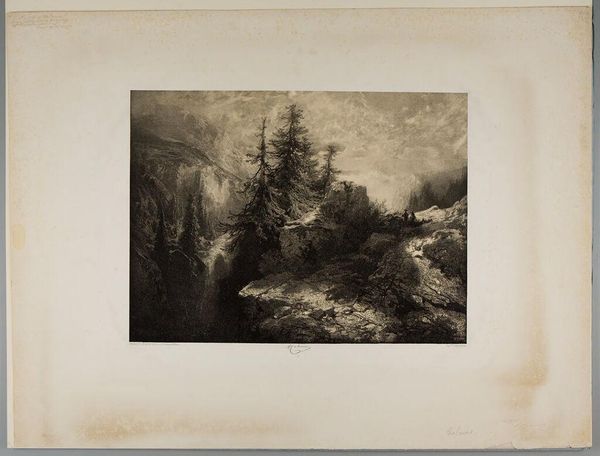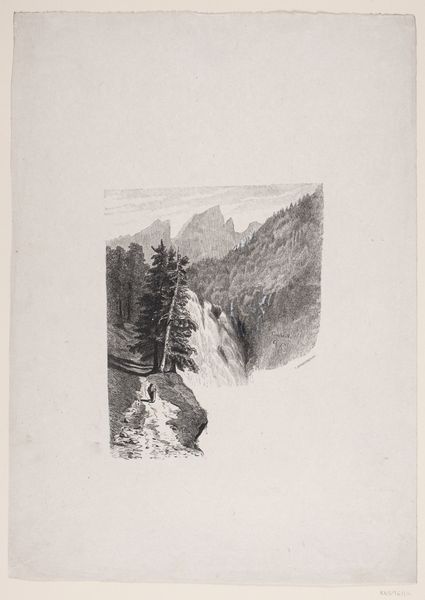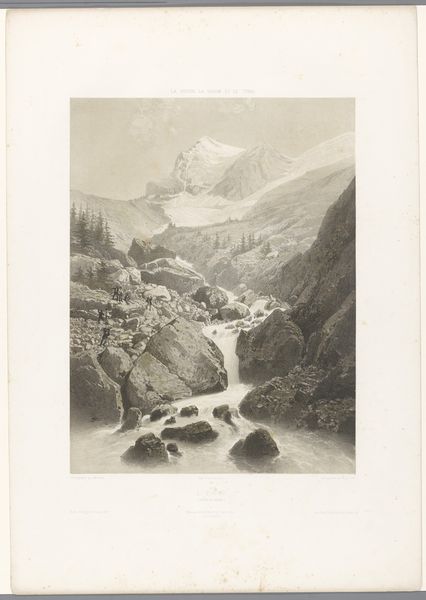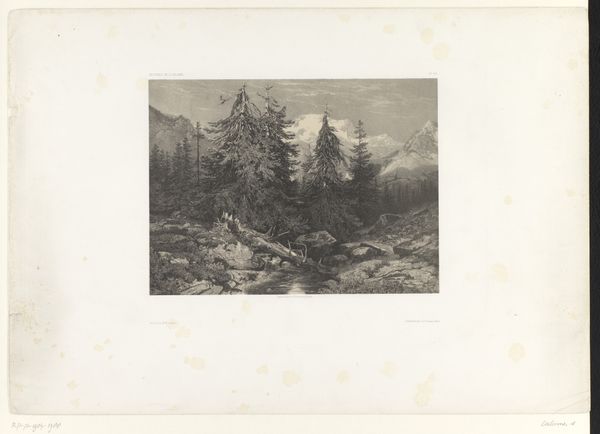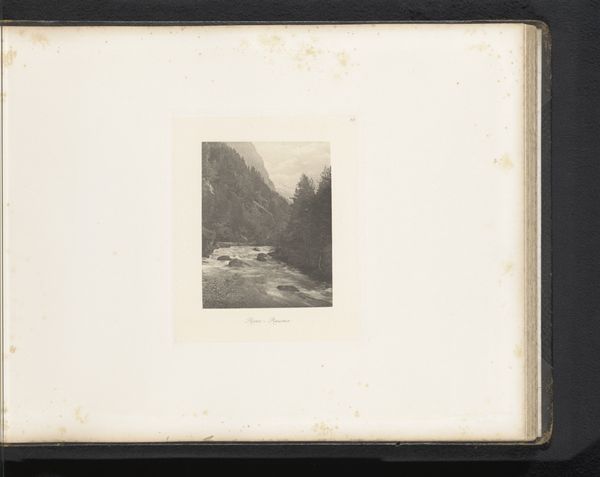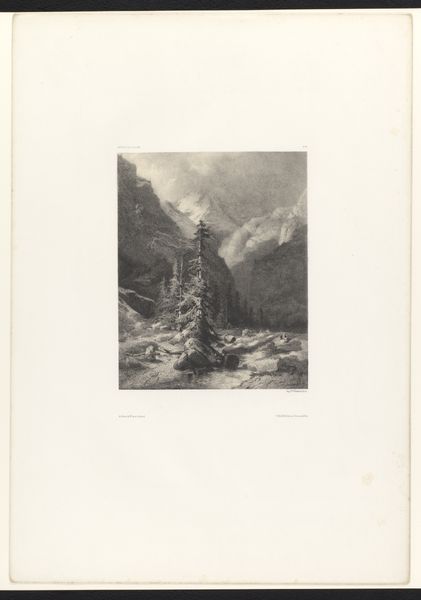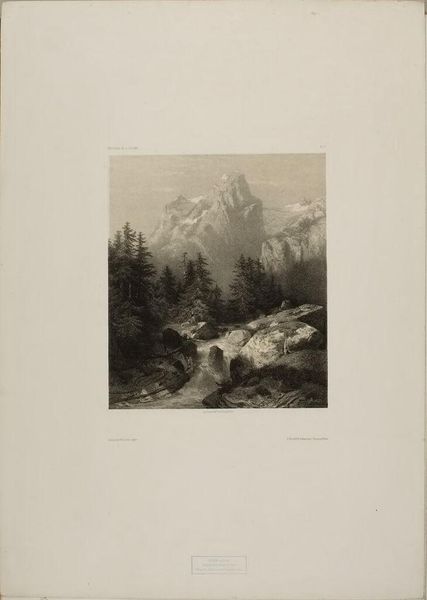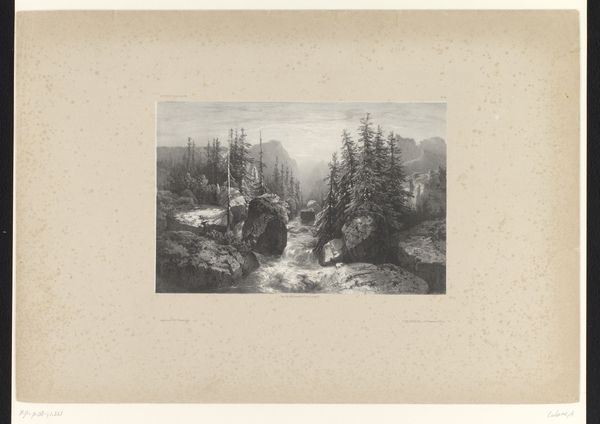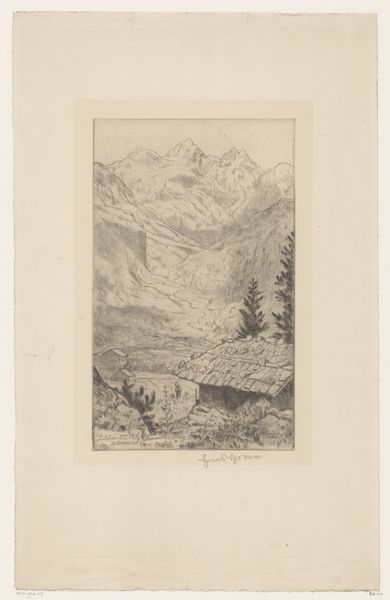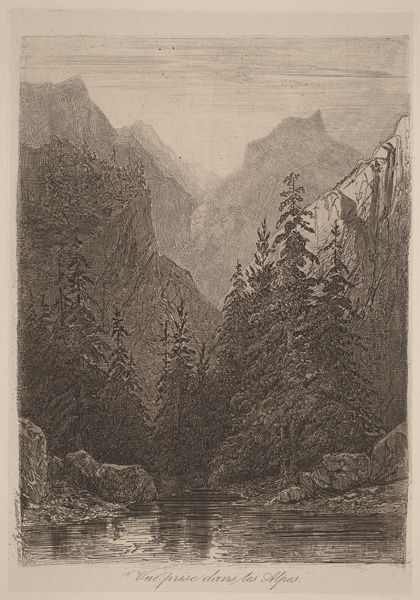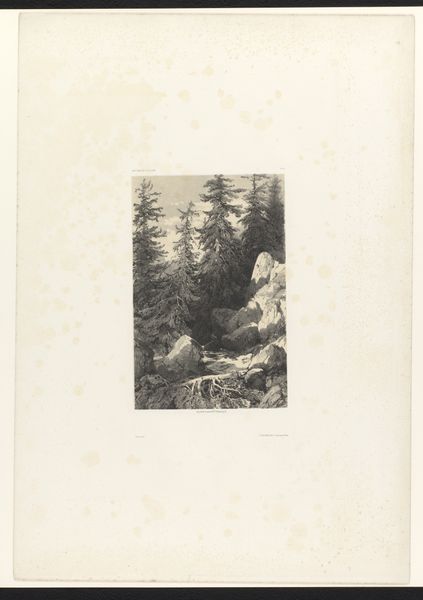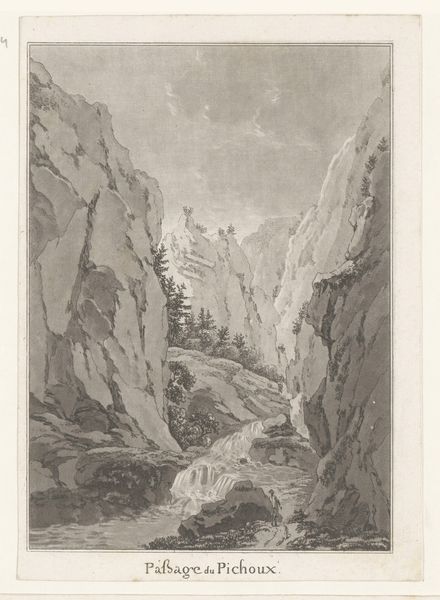
Dimensions: height 558 mm, width 390 mm
Copyright: Rijks Museum: Open Domain
Editor: This is Alexandre Calame's "Berglandschap met bomen en waterval", made with pen, pencil, and watercolor between 1852 and 1855. The misty scene feels quite imposing, almost monumental in its depiction of nature. What strikes you about this piece? Curator: For me, it’s the very act of *making* that sings out. Think about the materials: pen, pencil, watercolor - readily available, almost utilitarian. Calame isn’t aiming for some grand, inaccessible ideal. He's engaging with the landscape directly, processing the materials at hand. What does this say about the relationship between the artist and their environment? Editor: I hadn't thought of it that way, I was caught up in the drama of the landscape. Are you suggesting the medium is almost more important than the scene itself? Curator: Not entirely. But consider how Romanticism often focused on the sublime power of nature. Calame is participating in that tradition, but he is also grounded in the *material* world. Look at the visible pencil strokes. It reveals a working process, a physical engagement. What do these humble materials and techniques communicate about the artist's labor? Editor: I guess it makes the Romantic ideal seem more attainable, less about divine inspiration and more about skilled work. It shows us that grand feelings can be born out of simple actions. Curator: Precisely! And that accessibility, that grounding in process, helps demystify the artistic act, making it less a product of genius and more of labor and the considered handling of raw materials. That’s a crucial shift. How does this affect your interpretation of other landscape art now? Editor: It's really opened my eyes. I will certainly be thinking about the artist's choices, how they’re wrestling with materials rather than simply recording a scene. It takes away that preciousness, and brings us back to the fundamentals. Curator: Indeed. Looking at the raw materials and production process helps bridge the gap between the artwork and ourselves. We are able to interpret its greater message by examining how it came to be.
Comments
No comments
Be the first to comment and join the conversation on the ultimate creative platform.

